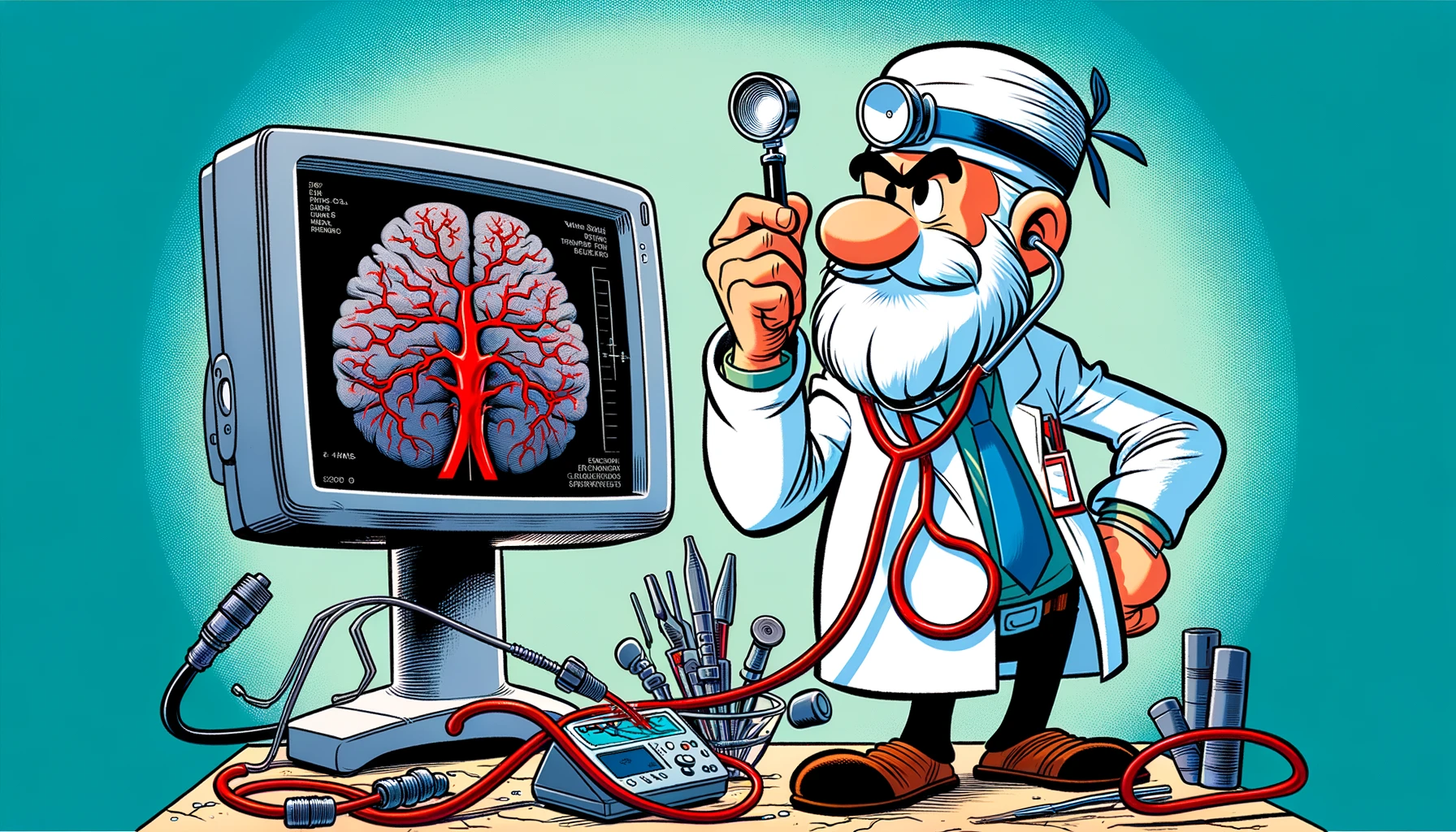Discover how cutting-edge deep learning technology is revolutionizing the precision and mastery of microvascular anastomosis techniques in the operating room.
– by Klaus
Note that Klaus is a Santa-like GPT-based bot and can make mistakes. Consider checking important information (e.g. using the DOI) before completely relying on it.
Deep learning-based video-analysis of instrument motion in microvascular anastomosis training.
Sugiyama et al., Acta Neurochir (Wien) 2024
DOI: 10.1007/s00701-024-05896-4
Ho-ho-ho! Gather ’round, my little elves, for I have a tale that’s sharper than the edge of Santa’s sleigh. It’s a story of how the clever minds in the land of neurosurgery are using the magic of deep learning to ensure that their hands are as steady as reindeer on Christmas Eve.
In the bustling workshop of the operating room, where precision is more prized than the finest toy, these neurosurgical trainees must master the art of microsurgery. It’s like making the tiniest of toys for the smallest of stockings, but far more important. To help them along, a group of brainy boffins developed a nifty tool, not unlike my own list-checking system, but for tracking the tips of surgical instruments.
Using the YOLOv2 algorithm, which I’m told stands for “You Only Look Once” and not “Yuletide Ornaments Lightly Organized,” they trained a model to follow every little move of the surgeons’ instruments. It’s like Rudolph’s nose guiding the sleigh, but for surgery!
This clever contraption measured how efficiently and smoothly the surgeons sutured artificial blood vessels, a task as delicate as wrapping the most fragile of glass ornaments. They broke down the suturing into four phases, much like I categorize my presents: fragile, sturdy, squishy, and mysterious.
The results were as clear as the jingle of sleigh bells. The algorithm could tell who was a novice and who was an expert, just like I know who’s been naughty or nice. The experts were quick and their instruments danced with the grace of sugarplum fairies, while the novices were a bit more like clumsy elves on their first day in the toyshop.
But fear not, for this isn’t a tale of woe. This deep learning tool, with its keen eye for detail, promises to guide these trainees until their hands are as sure as Mrs. Claus’s when decorating our North Pole home. And just like the Christmas spirit, this method could spread far and wide, making surgeries safer for all the good boys and girls.
So let’s give a round of applause, or a shake of the jingle bells, for this festive leap in surgical training. And remember, whether you’re flying a sleigh or wielding a scalpel, a little bit of magic can go a long way! 🎅🔔🎄
